Welcome back to Wonderland.
This series explores philosophy and political theory from first principles. Please start from the beginning to follow along with the story.
The natural world is the precondition for our survival and prosperity. Without access to the Earth and her resources, civilization would never have made it out of the Stone Age. Through conquering and cultivating the land, mankind has risen out of the uncertain state of nature and produced dynasties that last for centuries.
Our relationship to the Earth is a necessary and often under-examined aspect of our social and political life. The convenience of the city and her riches casts a fog between us and the conditions through which that wealth was derived. Along with the rapid development of our industries we have lost touch with the fertile ground that granted their ascendance. The consequences of this severance are intuited faster than they are felt. As for now, we’re running on fumes.
The comedown from the high of the industrial revolution calls into question to what degree government intervention is necessary to protect our natural world. Should producers have carte blanche authority to extract as they please? Or do we have a practical and ethical responsibility to curtail exploitations of nature in favour of more sustainable alternatives? How can we construct a future that allows us to enjoy the fruits of the earth without suffocating her in the process?
Meanwhile, our cities are increasingly dull and demoralizing. Every year, urban monotony grows as our cities become concrete and car-dependent, contributing to urban sprawl which stretches from coast to coast. Globalization comes with the unintended consequence of causing culture to spread more quickly than it can diversify. Billboards and billion-dollar companies become ubiquitous, everything adopts the same bland character, and everywhere loses its charm.
Is it possible to foster new and vibrant communities from the bottom-up? Can we work with these flows rather than against them? And if so, what would that look like?
These are the sorts of questions we will be considering, exploring their implications in both sustainability and city building. To start our journey, let’s pick up from where we left off in Wonderland…
Wonderland is a free publication that outlines a philosophy and political vision for the 21st century. To support my work and receive updates on new posts, sign up for a free or paid subscription.
Chapter One: The White Rabbit
You wake up in a sunny field. Finally, after all this time you’ve escaped Wonderland and are back in the Real World. You can’t believe that trick with the book worked. What a bizarre dream, you think as you sit up to get your bearings.
You’re surrounded by poppies, and on the horizon you can see the faint green glow of the castle. Either you’re still dreaming, or you never fell asleep in the first place. Fear and frustration bubble up in equal measure. If only escape had really been that easy, but it seems like this world isn’t done with you yet. And it’s not half bad, you muse as you take in the scenery.
It’s a beautiful, golden blue day. The farmland stretches for miles, as far as the eye can see, interrupted only by the occasional forest or cluster of homes. In the opposite direction of the Emerald Palace stands the city, glittering softly in the sunlight.
Something rustling in the flowers grabs your attention and you turn to see a white rabbit whizzing through the field. He is dressed to the nines and running on two legs, clutching the compulsory pocket-watch and muttering under his breath.
“Hey!” You call out, and the rabbit spins around on its heels.
“Where are you going?” You inquire, rather lamely, not sure what else you could ask.
“The Inn of UM is expecting an unexpected visitor, and I must be there for their arrival!” He replies in an anxious huff, turning back to the task at hand and racing through the poppies, towards the city.
The Town of UM stands as tall and proud as you last remember it, oozing with delight and opulence. You decide to go to it, following the path the white rabbit has carved through the fields.
As you walk, you pass by farms, forests, ponds, and streams. Everything is immaculate and pristine. The animals roam free, the brooks babble happily, and the dirt roads are well kept. Every person you pass smiles and gives you a wave. Others beckon you to stop and have some lunch, for by now everyone has heard the tale of the strange traveller walking within their walls.
You don’t know where you’ll go next, but for once you’re not worried about it. You watch a black cat stroll by and wonder what became of the book you left in the library. Could every living thing really have its fate determined within the confines of the castle? Seems like an unfair state of affairs. Although it would also seem that you’re not exempt from the equation.
You wander along, following the gold stones which lead back to the heart of the city.
Chapter Two: Man and Nature
Section #1: Right
Natural right is might. Human rights are a fiction, fabricated as an assertion of value turned entitlement. But no such right will the natural world bestow upon you, only the ones you are willing to win. We determine what we believe we are due and to what extent we will protect those claims. “Rights” are an extension of the governments and institutions that are able to safeguard them. Otherwise, all you have are daydreams and empty promises.
The natural world only has the rights we choose to grant it. Left unprotected, Mother Earth will be cannibalized by the same brutal forces she bore. Sucked dry for her riches, she suffers from an unquenchable thirst for more. Luckily, man manufactured institutions in tandem with his appetite. What we pillage we also protect, if for no sake other than our own future survival.
Self-interest always rears a certain degree of self-sacrifice, a prudence that causes us to pause and pace ourselves. We cherish natural splendour more than nature herself, for we are the only ones who can taste it. The sound of birdsong, the sight of a sunset, the smell of lilacs—these earthly delights know no connoisseurs save for mankind. We are both the environment’s greatest friend and threat, simultaneously protecting and destroying, all in the name of our own desire.
There is nothing wrong with this; this is natural order.
It’s fortunate for (or perhaps the cause of) our bleeding heart sensibilities that a rising tide does indeed raise all ships. An older, free run, well fed, “happy” chicken produces tastier, more nutrient dense and satiating meat than it’s fast-food-factory-farmed counterpart. Rich soil creates nutritious plants which create healthy animals which create a better qualitative experience for ourselves. Protecting our environment and the welfare of our fellow creatures is in our best interest. The proof is in the poultry1.
Section #2: Authority
Government is fundamentally a monopoly on force within a given territory2. It is an active, not enshrined, ability to exert power upon the earth and the people therein that grants it legitimate reign. Any other measure is ultimately shortsighted and inaccurate. Machiavelli triumphs because he does not seek to deny this reality, but learns and leans into its harsh truths to work with instead of against them. Let power be power, everything else flows from that. It is the lie that we have no means of exerting control over power (that we have no power ourselves) that prevents us from embracing this fundamental truth.
The state’s ability to protect and control its territory is contingent upon the support of its citizenry, usually in the form of taxation. Without a continual supply of new wealth and resources, the sovereign authority will grow insolvent and stagnant. It needs a generative populace to promulgate its reign, for power requires constant consumption and production to sustain itself.
The government is what enables this creation of wealth. It is what sets and secures the conditions so that people may live and trade freely. Without the state of man is a state of anarchy, where each is subject to the wanton whim of the other. It is through our participation in politics that we come to create certain standards of behaviour and codes of conduct. Enshrined into law and backed by the boot, long term coordination and cooperation becomes possible.
The state provides the groundwork upon which the people may flourish. And flourish they do, through unfettered access to the land that they may toil and transform, their labour generates value which increases the prosperity of the entire regime. This is the true ideal, but our current political system adds one caveat to this claim. In the transition from feudalism to capitalism, one critical truth was forgotten: the land can belong to no one. No man creates it, and no man alone may keep it.
Imagine how much territory a single individual could exert control over, if placed in an absolute state of nature. Assuming he’s a strong and capable man, he still couldn’t monopolize much more than his wingspan. Give him a gun and some elaborate booby traps and he may be able to defend a bit more, but not indefinitely, not without the help and ingenuity of his friends. A storm is always coming, be it man or nature.
No system of power can guarantee absolute authority, and any that claim to should be regarded with suspicion. All control is contextual and contingent because power is equally contingent. We may spot its trends and learn its appetites, but the tides of man are ever-changing. Power is for the present, with a well educated bet on the future. This is all we can know, and all we should hope to. For silver will tarnish over time, while flowers grow from the most unexpected of places.
Section #3: Progress & Poverty
If power is required to secure territory, and people require access to land to work and prosper, then the wealth of nations is dependent upon the territory they keep. There must be land before labour can be exerted, and labour must be exerted before wealth can be created. For it is through this transformation of earth that wealth is derived, upon which land is the conditional precedent, the material field which must be toiled.
This is what political economist Henry George determined in his 1879 magnum opus, Progress and Poverty. While searching for an explanation as to how poverty persists and is even exacerbated in the face of unprecedented material progress, he landed upon an often overlooked key: the role of land in our society. George reasoned that as land is the necessary precondition of labour, a political system that inhibits who can toil the earth will invariably produce more poverty than prosperity.
Despite advances in science and technology, an unfair advantage placed upon those who can access land will naturally increase wealth inequality in direct proportion to progress. George’s logic is simple: as populations increase and demand for land outweighs the supply, those who control the field of production inadvertently control the producers. It is not greedy capitalists, who “exploit” workers by paying their wages and adopting the risk of new ventures. It is the land owners, who exploit this transaction by extracting rents while providing nothing of value themselves. Man did not create the earth, so why should any man alone possess unique title to it?
The premise of private land ownership is what provides the basis for turning progress into poverty. Without the ability to access the earth, no man can be said to have a right to the fruits of his labour, for the orchard was fenced off long ago. If one man can command the land upon which others must work, he can appropriate the surplus value they create as the price of his permission to work it. This creates a system akin to wage slavery, wherein competition for access to work drives wages down instead of demand for workers driving them up. Even in the face of material prosperity, wealth inequality will be exacerbated as the benefits of progress are concentrated in the hands of those who control the land.
Section #4: The Value of Community
The most valuable land on earth lies not in diamond mines or Amazon rainforests, but in Manhattan and Hong Kong, where people and the culture they bring are richest. We value density, opportunity, and diversity more than anything else. Where these things are abundant, real estate prices will soar.
The value of land is not determined by any man in isolation, for man in isolation suffers from a loss of connection. Even if situated among plenty of resources, a single man cannot capitalize on the bounty of nature without the help of others. Division of labour is what enables economic efficiency and produces the prosperity we see today. We benefit from living in close contact with others, for we have easier access to the fruits of our culture. Centres of human life contain the spoils of intellectual activity, be they libraries, universities, museums, or galleries. Access to the best and brightest is a major asset, which is why land value is dependent almost entirely on population.
Another way of saying this is that land value is created by the community as a whole. The worth of any particular lot is rarely inherent, but contingent upon who and what surrounds it. This results in the phenomenon of speculation, wherein people will buy land as an investment, anticipating its value will increase over time as populations climb. Prime real estate will sit unoccupied and underdeveloped as land owners wait to cash in on hypothetical future returns. This waste of space pushes people to the edges of a city, further from the locus of productivity, all for the benefit of a select and incidental few. Withholding use creates artificial scarcity and economic inefficiency where it need not exist, worsening material conditions rather than improving them.
George’s solution to this riddle is simple: as the land derives its value not from any individual but from the community as a whole, everyone ought to share in the bounty of this relationship. As the state relies upon the population to support its reign, the area it protects should be the common right of all who live there. It is the citizens who enable the occupation of the land and thus they should have access to the territory: the two systems are mutually interdependent.
Section #5: Taxation
To ameliorate the tension that proto-capitalism has placed between labour and land owners, George recommends tapping value at its source, and extracting rents from the land itself. Rather than an elite few growing wealthy from an unearned advantage, tax them for the privilege of exclusive access to what should be the common right of all. It is the community who enables the cultivation and improvement of the land, therefore the community should be the ones who benefit from its use.
An increasing population will drive up prices without regard to the inherent qualities of the earth. The price of a plot of land does not arise spontaneously, but emerges as a consequence of which people and how many live nearby. The value of these collective endowments is expressed as rent: the amount a person must pay for exclusive access to a given area, given how desirable it is as a consequence of its neighbours.
This concept of rent is what George referred to as a “land value tax”, which would be paid yearly to the state in exchange for land held by individuals as private property. The rates would be calculated annually and based on the raw social value of the earth, without regard for any improvements made by the occupants. Desirability, determined by both urban density and natural splendour, would be the driving force behind these assessments. If a location is over or undervalued, this discrepancy would be reflected in market demand and could easily be adjusted over time.
The land value tax would be used to fund public services and infrastructure while also promoting more efficient use of space. There would be no incentive to hold land for speculative purposes as doing so would no longer be profitable. Any land that is taken off the market would need to be occupied and used to its fullest potential, or by those who can afford to squander it. People would no longer be penalized for improving their homes, as they are in the traditional property tax system, but instead encouraged to make the best of their space. Taxing only the occupation of the earth itself and not who or what is upon it creates the conditions of political equality. Those with unearned access to natural resources offset the cost of this benefit by paying society back for the privilege. Thus, the only inalienable advantages that remain are matters of innate intelligence, skill, and industry.
A basic land value tax is not only sufficient to cover the taxation needs of a country3, it has the added benefit of spurring more industry. Corporate, sales, and income tax all slow down commerce by acting as an artificial weight on trade, punishing people for producing wealth rather than rewarding their productivity. The community gains nothing from kicking the geese that lay the golden eggs. Leave to industry, thrift, and skill their natural reward, for productive enterprises benefit everyone. Every ounce of prosperity yields collateral advantages, be it more beauty, supply, demand, or hope.
Taxes that are arbitrarily levied have the tendency to be evaded, and carry the unintended consequence of shaping a city in unexpected ways. Regulations upon symptoms of wealth rather than its source creates cities that have character without cause as people struggle to skirt by restrictions. The thin facades of Amsterdam or abundance of American big-box stores are examples of this. But tapping wealth at its root brings about the benefit of producing a positive feedback loop. A prosperous, populous area will generate high taxes which are then reinvested into the community. The downstream effects of this being a rising tide that raises its own current.
Section #6: Protection
Under George’s view, the state would act as the ultimate custodian of the land, determining how it is divided, who may rent it, and at what rate. As the sovereign is now in the real estate business, he has a vested interest in maximizing his customer base while also ensuring the longevity of his product. Just as your landlord may limit what actions are permitted within your rental suite, the state may similarly assert how the Earth and her riches must be treated.
Matters such as environmental protection and resource management thus become of utmost importance. No longer are those who are said to “own” land entitled to do with it as they please, they are beholden to the rules and regulations of the sovereign. Title to land is title to the land alone, not the sky above or earth below. The state may permit resource extraction, but at its discretion, and always prioritizing sustainability over short-term gain. The deterioration of our natural world is a consequence of a political system that does not recognize the earth as the necessary foundation for human flourishing. By emphasizing its importance you remove the incentive for creating landfills and clearcutting forests. For these eye-sores acts as blights upon the earth, wreaking havoc upon the environment while lowering its productive potential.
A state should strive to be self-sustaining and not reliant upon foreign imports to thrive. This makes farming, logging, and mining all crucial industries which must be managed with care and subsidized if necessary to ensure their success. Much like the Earth herself, citizens rely upon these resources for their survival, so it’s in their collective interest to support their cultivation. Island nations tend to be better at resource management since the limited quantity of land forces them to care for it more seriously. An attitude of prudence, even in the face of abundance, is always wise and makes for wealthier nations in the long term. The importance of these values should be reflected in laws on resource and waste management. Healthy air, water, and earth is a benefit to all, and should be protected at all costs.
Pollution, either waste or emissions, presents a problem for free trade. If one can get away with externalizing the cost of their actions without having to contend with the consequences, they are rewarded rather than punished for their indecent behaviour. A just state would impose extremely harsh penalties upon pollution and contamination of any kind. Any action that causes damage to the natural world which cannot easily be reversed should be fined heavily, if not banned entirely.
Part of the problem with modern waste management is that the veil of sustainability is valued more than the act itself. Poor standards of sorting and sanitation mean that most of what ends up in your blue bin wont be recycled, just discarded elsewhere, out of public sight and mind. Much of the plastic collected in North America to be reused is exported to China, never to be seen again. With little requirement for transparency or accountability within our waste management system it’s impossible to know if these problems aren’t simply being exported elsewhere. Education on what constitutes good stewardship is minimal and rarely enforced, encouraging people to adopt indifferent attitudes as they are never actually penalized for acting carelessly.
Countries with the best pollution management systems highlight the importance of individual action and maintain high standards for waste collection. Through strict regulations and charging citizens the real cost of properly disposing of their trash, more conscientious attitudes are incentivized. Incineration of waste is another effective solution, which when done properly can both get rid of garbage while also generating heat and electricity. The ash leftover from the incinerators can then be used to line roads or construction projects, integrating it back into the environment.
The rights of man and nature are reliant upon the state. We choose what we deem worthy of protection and to what ends we will go to care for it. Environmental conservation and animal welfare are thus the natural domains of good government. Various political systems will promote different kinds and degrees of protection, but all will benefit from taking the Earth and her children into consideration. We have an innate affinity for nature and thrive where she flourishes, so we’ll organically be drawn to places that value her preservation. As material progress delivers people out of poverty, they can increasingly afford the luxury of concern for something other than their own wellbeing. A certain degree of prosperity is required before people are able to advocate for the needs of Mother Nature and her creatures.
The welfare of wildlife, livestock, and animals under human care should not be overlooked. As these creatures are sentient their suffering must be considered in any civilized society. Guidelines that require good living conditions and prohibit sadistic, factory farming practices would likely be supported by many consumers, even if this results in a more costly product. The price of needless suffering weighs upon our collective souls, and is best avoided wherever possible. Imposing laws that minimize the harm done to animals and protects their dignity is necessary for any just nation.
Chapter Three: The Inn of UM
As you make your way into the centre of the city you are struck by a clock standing in the town square. Its hands are in the 12 and 6 position, but its face reads “HERE” and “NOW”. You watch as the minute hand ticks away from 12:30, and the “HERE” slowly fades into “THERE”, pointing at 7 o’clock.
You turn to follow its lead and spot a bright sign reading “The White Rabbit”, with an arrow enticing you towards what looks like an inn. You decide to investigate and enter the earthy abode. It’s warm and welcoming, fashioned entirely out of hardwood and cobblestone. A hearth crackles in the centre of the foyer and the White Rabbit stands bored at reception, hands propping up his chin, wearing a thin pair of reading glasses.
The door chime signalling your entrance causes him to jump with a start. “Yoo-hoo!” he calls. “Oh, it’s just you,” he adds with disappointment a moment later.
“What are you doing here?” He inquires, with an air of indifference.
“It’s an inn, isn’t it? I need a place to spend the night.”
“Alright,” says the rabbit, moving some papers and picking up a pen. “And pray tell, what’s your name, citizen?” A long thin finger pulls down his spectacles to peer at you quizzically.
“I… Right. The thing is, I’m not a citizen. I was just at the palace, with the Princess, and she named me the new ward of UM.”
The White Rabbit grows miraculously paler and squeaks, “Good Garden! Of course it’s you! The unexpected visitor. Why didn’t you say something sooner? Please, please come in. I have a special room I’ve set aside… You must be exhausted… Let me get your coat—Oh! Her Royal Highness said I should give you this.”
He produces a wristwatch and places it in your hands. The simple silver chain wraps easily around your wrist, showcasing an empty opal face.
“Now, this is no any ordinary accessory,” says the rabbit. “But a key to the city. With this watch you can go anywhere you please and see all that our small town has to offer. Guard it carefully, for without it I cannot guarantee your safety. If you should go back into Wonderland, show this watch to Tru at the gate and he will ask you no questions. The watch is the bridge between you and UM. You understand?”
“Yes,” you say. “Thank you. I’ll be cautious. Now, do you know where I could get something to eat? I’m so hungry I’m getting nauseous.”
The rabbit smiles and stretches an arm towards the door. “Go back to the town square and at 3 o’clock you’ll see a store. Don’t worry about money, just show them the watch and all will be well. Merchants of UM are in the business of wealth, and sometimes it happens that what you give is worth more than what you sell.”
Chapter Four: The Shape of a City
Section #1: Chaos & Order
Visions of Utopia have dominated political philosophy since the days of Plato. The practice of elucidating the conditions of a just society is almost a right of passage for those who proclaim an interest in political theory. In the century and a half following the founding of America, over 250 utopian communities were created in the United States alone, each with its own character and concerns. Many of these did not survive for long, but the potential of praxis is its own reward, allowing us to explore what other worlds and ways of life are possible.
People don’t usually hate cities, but city failure. The attraction to vitality is universal, but demand for lively areas far outweighs the supply. Most modern cities are plagued by chaos masked as order, with rules and regulations imposed by elected officials with little regard for the actual processes and drives that keep a city alive. The wisdom of self-organization is throttled by the whim of the public servant, who levies laws not knowing what it is his constituents really want or how best to serve their needs.
There is an innate tension between urban planning and social spontaneity. Too much top-down control stifles creativity, forcing people to live in conditions that grow stagnant and maladaptive for their cultural contexts. But too much bottom-up liberty is equivalent to anarchy, preventing people from enshrining any consistent principles or codes of conduct into their environment. What’s needed is a political structure that can balance the benefits of these countervailing forces, allowing both static patterns and dynamic reactions to flow and thrive.
A city is a complex, self-organizing system like any other4. Urban regulations that run counter to organic processes can cause maladaptive patterns to proliferate, confusing signals of information by imposing false bottlenecks and insisting upon certain behaviours. This is the problem with most zoning laws and building codes, they enforce specific standards that stifle creativity and prevent meaningful innovation. But some degree control and consistency is necessary. Letting cities grow completely organically can lead to problems with infrastructure and urban development. What a successful city needs is a skeleton, a framework that can be fleshed out by its citizens.
Section #2: Recursion
The political process can be compared to the creation of a membrane. The territory is differentiated and protected, you are either “out” or “in”. What happens within this new ecosystem is up to our discretion, and how long it survives will depend upon its constitution. Personally, I am a big fan of recursion. As without, so within. A city that mimics these natural processes of spontaneity and self-organization will become more resilient precisely because it is more adaptable. The central authority should promote decentralization wherever possible, its primary role being the creation and preservation of this field of potential.
“The city within the city,” as Leon Krier calls it. This urban planner advocated for the creation autonomous urban quarters, each with its own distinct character. Architect Frank Lloyd Wright had a similar vision, proposing that cities should be divided into counties, each with an architect that manages the distribution of land and provision of social services. In essence, mimicking the American state system on a local level, wherein each neighbourhood has its own leadership and ability to make its own rules.
A modern city should realize these dreams through a concentric district design. The centre of the city being highly centralized and divided into three sub-sections. The second ring around this nucleus would consist of nine more districts, each managed independently and catering to the needs of different communities. The outer layer of the city would be completely unconstrained and open to cultivation, allowing people to create whatever conditions are agreeable to them. Moving inwards, the city becomes more dense and centralized. Moving outwards, it becomes rural and free.
This arrangement would allow citizens to live in an environment that suits their needs while still having access to the benefits of diversity and advantages of multiplicity. The paradox of urbanism says that our desire for natural, private space is at odds with our enjoyment of a lively social scene. The magic of the city happens where people are most concentrated, but they should also have access to open air and countryside.
The downtown core of the city would be centrally planned and require a high degree of top-down control. It would offer the sort of density and technological integration associated with luxury living, condominiums, and automation. The nine surrounding districts would be privately developed, each with a distinct character and catering to different cultural values. Operating off of unique regulatory and design principles, each would be responsible for providing its own infrastructure and centralized services. The outer ring would be rural, ripe for homesteading and market mayhem, the Do-It-Yourself venture where anything goes and people are only expected to comply with the most basic laws and limitations.
Each of the twelve districts would be independently managed, but anchored by a Community Centre5 which will provide citizens with basic social services. As the outer, undeveloped ring is settled, people could petition to create new districts by collecting signatures and erecting a new Community Centre, thus allowing the edges of the city to evolve organically in accordance with desire.
Taxes paid to the state would depend upon where a citizen lives. The anarchic outskirts would be cheapest, where you only pay for the raw cost of land. As you move inward and more amenities and social services are added on, the cost of rent would increase in proportion to the additional benefits.
By reducing the scale of city management into smaller districts, more effective policy could be enacted at the local level. Instead of making sweeping proclamations which impact the state of the city as a whole, a more fine-grained approach allows for degrees of nuance and control that would otherwise not be possible. This carries with it the added benefit of increasing the expediency with which policy can be enacted. Instead of awaiting rubber stamps or orders from on-high, local leaders are able to execute decisions based on the needs and values of their constituents. By allowing for more complexity at the outset, the city is actually able to operate more simply.
Section #3: Let 100 Flowers Bloom
The nature of the districts themselves is up to the discretion of the sovereign and his citizens. An international city-state would likely attract immigrants from all over the world, so creating distinct cultural centres would be both practically sensible and visually beautiful. Other areas might cater to different lifestyles, with districts that are dense and lively, suburban and family-friendly, or modern and environmentally-conscientious. Differences in administration and regulation would allow for different niches to be catered to while also enabling movement between these spaces.
An Oriental, Islamic, or Latin quarter could celebrate special holidays, have an official second language, or introduce unique prohibitions on certain substances. The district could fund the creation of religious buildings, such as mosques or temples, or impose rules that regulate the appearance of architecture—creating a cohesive atmosphere. Each area would be responsible for its own infrastructure and amenities, so the trash bins, lampposts, and flower boxes would change depending upon where you go, contributing to a distinct sense of community identity.
Zoning and business regulations may also vary, as would the quantity and quality of public services. A suburban, family-oriented area might emphasize accessibility, impose quiet hours, ban narcotics, and provide free schooling and childcare. Whereas an eco-conscious district would focus on free transit, renewable energy, zero-waste, and cultivating community through regular farmers markets and weekly yoga classes.
One part of town might be modelled after the liberty and density of New York City, while another adopts winding, European-style streets and shuts down on Sundays. An area by the ocean might take on a Mediterranean character, while a few blocks over are English townhouses situated amongst French gardens. One branch of the central core could focus on adopting and integrating as much modern technology as possible, while another leans into the neon, retro-futurist aesthetic of downtown Tokyo.
The cumulative impact of these many districts is a city of immense vitality. Free to roam, the citizens may enjoy the benefits of many different cultures and value systems without having to sacrifice the comfort of their home. The rules of these districts would not be stagnant, but adapt in response to the changing needs of their clientele. Citizens would still have the capacity to advocate for their desires, but they would not be carried out through uncertain, democratic means. The district management would be responsible for keeping their constituents happy and providing the services they seek, otherwise they will simply take their business elsewhere.
Section #4: Patchwork
The districts should be designed with walkability in mind, with Community Centres situated at their core to promote accessibility. These centres and their services must be no further than a 30 minute walk away, meaning that the districts should be no greater than 5km across, or an hour’s walk. Density would vary from a minimum of 1000 inhabitants all the way up to 150,000, depending upon how close they are to the downtown. This would put the total population of the city at a maximum of around 2 million people, consisting of 12-20 districts and occupying 15-20 square kilometres.
The city should use natural features of the environment to inform its design. Rivers, lakes, forests, and valleys can all enhance the landscape when their organic properties are celebrated rather than obscured. Natural boundaries can act to separate districts while also imbuing them with unique qualities and acting as a common focal point. Emphasizing the innate aspects of the earth has the added benefit of creating difference, allowing people stay oriented and easily form mental maps of the city.
Borders between districts need to be highlighted, creating visual separation and informing citizens when they cross into a new territory. Edges can be emphasized through tree lines, gardens, walls, and fences. But should also be punctuated by paths, gateways, and bridges that celebrate the transition between spaces. An edge, properly implemented, should act as a seam rather than a barrier, encouraging cross-use between communities and enticing people to explore other areas. This can be accomplished through shared public spaces and common attractors that will pull people towards the perimeter, encouraging them out of their comfort zones.
In “The Death and Life of American Cities”, Jane Jacobs lays out the essential principles of urban design. Namely, the city should aim to foster lively and interesting streets, encourage mixed use, and density over sprawl. These factors create the added benefit of fostering feelings of safety within the community. An active street that is used throughout the day will have far less instances of crime than one that is deserted. Frequent, casual contact with locals creates a sense of public identity and web of social trust. The convenience of leaving keys with your corner grocer, or trusting that your neighbours will keep an eye on your children as they play outside, are signs of a strong social fabric that cannot be institutionalized; it emerges out of the city itself.
Section #5: Rods
The streets and sidewalks are the vital organs of the city. If they are pleasant and interesting then they will be used frequently, and if they are used frequently then they will become ever-more interesting. The most walkable cities in the world all contain short blocks, with ample opportunities to turn corners and wander in new directions. Wide sidewalks that can accommodate patios and street vendors while still providing space for movement and standing still are more comfortable than narrow strips.
Lining the street with trees provides both shelter and shade while also creating a barrier between the sidewalk and road. Grassy boulevards are a new invention which unnecessarily broaden streets while adding little utility. Replacing them with trees would make streets more cozy, dense, and walkable. The pavement should be made from something other than concrete, which is not very durable and doesn’t patch well. Instead, bricks or cobblestones covering both the sidewalk and road would encourage pedestrians to walk on the street while signalling to vehicles that this is their turf too.
The roads themselves should be narrow, reducing traffic flow and encouraging alternative forms of transit. Major roads should be kept out of neighbourhood centres and instead routed along the perimeter wherever possible. Barcelona accomplished this through the creation of “superblocks”, combining nine regular blocks and forcing through-traffic to the outside. Bike paths could be constructed along highways and nature trails, but bike-specific paths within the city itself complicate more than they clarify. Cyclists should simply follow the rules of the road or stick to the sidewalks.
Additional public paths such as promenades, skywalks, underground tunnels and arcades also enhance diversity and walkability. Districts would benefit from having a promenade where people can go to see and be seen, acting as a centre for public life and attracting people to local fairs and festivities. Skywalks and tunnels can be used to knit together a dense area while also sheltering people from the elements and introducing them to new places. Covered arcades provide the same benefit by allowing people to explore different buildings and shops without having to go outside.
The importance of mixed use development cannot be overlooked. A city that zones to separate work from home and shopping from entertainment does itself a disservice. Segregating these activities ensures that only one aspect of the city is used at a time, and gives people little reason to wander outside of their daily routine. Too much self-organization will actually cause birds of a feather to flock together, so strategic zoning laws could be implemented to guarantee diversity instead of enforcing monotony.
Monotony and repetition are not alluring or inviting, conveying only an aimless lack of direction. Whereas differences in architecture generate excitement and intrigue as they represent the variety of human life. A dense neighbourhood with work, play, shops, restaurants, clinics, and homes all within a 5 minute walk ensures that the streets will be constantly used as people shuffle from place to place. For busy, lively streets you need many people with different schedules who all live in the same space.
Section #6: Nodes
The local landscape ought to inform the functional and aesthetic design of a city. Instead of trying to repress its natural features, they should be accentuated and celebrated. Bodies of water such as lakes and rivers must be exposed and preserved. High vantage points should be transformed into accessible landmarks so people can enjoy the view. The most desirable features of the environment must be protected and made available for everyone to appreciate, be they magnificent trees or sandy beaches.
Public parks, playgrounds, and squares help knit a community together by offering a central gathering point. The should be placed where they will see the most use, preferably somewhere dense where people will visit throughout the day. People attract people, and too many spaces to congregate will spread the population thin—it’s better to have a few popular places than many desolate ones. Parks, courtyards, and gardens need both enclosure and open air to be inviting. They need sunlight, various features, and focal points to draw a crowd inside. Amenities such as washrooms, chess pavilions, or skating rinks are better placed around the perimeter as this will attract visitors and encourage cross-use with the surrounding streets.
Parks can also connect neighbourhoods. Long, thin strips of greenery encourage walking and are good for transporting people from place to place. A thin space with many people moving through it feels more lively, which is the why we are drawn to boardwalks and shopping malls. Alcoves carved out for entertainment, vendors, seating, fountains, and gardens would add destinations and intrigue to the journey.
Access to nature’s bounty should be free to all. Community gardens and fruit trees must be plentiful and maintained by local volunteers. An urban barn would generate food for the public while also injecting animal life into the community. Petting zoos, wildlife sanctuaries, and animal shelters are also vital. Ensuring that wildlife has a hospitable habitat is essential for promoting a strong relationship with the natural world. Parks could be enhanced by adding peacocks or prairie dogs which act as an additional attraction. Unrented space may be cultivated by the community, but could not be monopolized by any person in particular. People may rest in public spaces, but would be forbidden from occupying them for a prolonged period of time. Having a nap in the park is fine, but pitching a tent is not.
The districts should be punctuated by various landmarks, statues, shrines, and religious buildings. Special sites that represent collective identity and values are important for fostering local pride and create focal points within the community. The variety among different districts will help imbue them with distinction and character, elevating their unique traits and culture. Holy sites that symbolize the heritage of a community are essential as they help maintain a connection to the past. The charm of shrines and sacred spaces should not be underestimated. They act as beacons of beauty, faith, and duty, inspiring awe and delight in all who pass by6.
Section #7: Community
As the districts would be managed by different leaders, infrastructure and urban planning would vary depending upon where you go. Different plants, pavement, lampposts, trash bins, benches, and signage would create a distinct sense of district identity. While having some universal designs such as unique pedestrian crossing icons, or putting maps on manhole covers, would create a thread of cohesion that ties the entire city together. A strong national brand promotes a sense of civic spirit.
Installations such as gazebos, mailboxes, restrooms, drinking fountains, information kiosks, and outdoor instruments would be up to the discretion of the district. All of these amenities enhance quality of life while also promoting participation in public spaces. Bus stops should be placed next to newsstands and coffee shops, making waits a more pleasant and possibly productive experience. Allowing people to enhance and modify their environment creates a legacy for future generations. Decorating spaces by adding art, lights, chairs, little libraries, or other delights should all be encouraged, for there is a positive feedback loop between public empowerment and civic pride.
The Community Centres which anchor each district act as a focal point of local activity and public service. They could provide anything from post offices and child care facilities to sport fields and dance nights. By concentrating community activities in a single place they are more likely to be remembered and frequented. Providing space to host events and weekly gatherings would promote a sense of camaraderie and shared culture, allowing people to play a more active role in shaping their community.
Special spaces such as a shared greenhouse or local art gallery foster craftsmanship and highlight talent within the community. Facilities such as a local tool shed could loan rarely used items, such as lawn mowers and hand drills, reducing the need for redundant individual ownership. Donation sites and burnable depots would turn local trash into treasure and energy. Playgrounds filled with unwanted raw materials would recycle waste into opportunity for children to construct and create. All of these amenities are possible, but none of them are necessary. The beauty of the many district design is that people can select for whatever services and features suit them best, and the benefits of the rest are just a walk away.
Section #8: Vitality
Part of the social alienation and isolation we experience today is a consequence of the home becoming more grand. When all of our entertainment and material desires can be delivered straight to our door, the need to participate in public life is diminished. The internet connects us globally while simultaneously eroding the quality of our local culture, which must be revitalized by introducing new activities and incentives.
E-Commerce has led to a resurgence of the Arts and Crafts movement, the wares of which shine best when subjected to tactile scrutiny. Local potters, painters, and jam-makers would benefit from having small stands and stalls in addition to their online stores. Street merchants provoke delight and intrigue while also circulating wealth within the community. Outdoor vendors and food trucks should be easy to operate and upkeep, removing barriers to entry and eliminating the preferential treatment often given to corporate franchises and food-chains.
The public space should offer many opportunities for teaching and learning. People from all backgrounds with niche talents or specialties must have access to platforms where they can share their knowledge with others. Lectures, workshops, and classes hosted by uncredentialed individuals would foster an environment that views exploration and education as core values. Institutions for research and development should not be left to the universities alone, but made accessible to as many people as possible, encouraging an atmosphere that prizes learning, innovation and industry.
Children should attend small, local schools and have ample opportunity to play a meaningful role in their community, whether that be by volunteering at a garden centre or putting on a play at the public amphitheater. Breaking up monotony through special events such as “Bring Your Kid to Work Day” highlights the importance of apprenticeship and hands-on experience in addition to classroom schooling. It is vital for children to feel a sense of belonging and responsibility towards their community, for this is what encourages them to become active and engaged citizens.
The occasional suspension of social norms is essential for creating a dynamic and energized environment. Holidays such as Halloween and festivals like Nuit Blanche allow people to explore and interact with their communities in new and exciting ways. Regular events such as monthly movie screenings, weekly garage sales, or annual parades help to entice people out of their homes and into public life. Every month a different district should put on a weeklong display, promoting their distinct culture and identity while attracting and advertising to residents of other communities. These local showcases would both enhance civic pride while also providing a good reason to explore other parts of town.
Celebrations of life and achievement should be commonplace. Perhaps a community newspaper announces local births, deaths, and marriages, while also advertising new store openings and job postings. Or maybe the local high school puts on a graduation parade, attracting the eyes and cheers of the neighbourhood while strutting their caps and gowns with pride. Anything that fosters a sense of abundance and prosperity should be highlighted, for our attitudes and beliefs shape our fate.
Chapter Five: Magic in the Air
Stepping back out into the town square you spot a corner store across the street. Inside you find freshly cut flowers beside still-warm loaves of baked bread and baskets of colourful fruit. You eye them hungrily, not sure what you can take.
Reexamining the silver watch, the opal face reveals a sliver of light, pointing back towards The White Rabbit.
“Strange,” you say to yourself.
“Excuse me,” you say to the shopkeep. “Can you show me how this thing works? I want to buy some food but am not sure what I can afford.”
The man smiles. He has a wide grin, blue eyes, and dark hair. “Don’t be silly, my dear. Take anything you like, we have no use for money here.”
“But surely, I must pay you back somehow,” you insist.
“Not me. For I did not grow this fruit or bake that bread. The value I add is only intermediary. If you want to help the florist then by all means, go work in the gardens. Or if you want to do some good for the baker then please, bring him these eggs he requested. You’d be saving me the trouble of having to deliver them myself.”
“Sure, I can do that,” you say. “And in exchange you’ll give me a loaf of bread?”
“Certainly. Take some cherries and cheese too. He’ll turn those eggs into tarts which everyone adores. Once the people smell those I’ll have a line out the door!”
He hands you a package of groceries and points to your watch. “Just follow where it leads, and try not to crack any on the way!” He says, with a wink and a wave.
Ravenous, you break into the bread as soon as you’re outside, and it’s the best thing you’ve ever tasted. The cheese is hard and nutty, and the cherries sweet and juicy. Looking at the eggs at the bottom of the bag you check your watch and see that a new hand has appeared. To the south, at 7 o’clock, is the Inn. But a new line at 9 now points westward, blinking persistently.
You follow its lead, through streets and arcades, passing by shops and cafes, until eventually you encounter a river. You check the watch again but its face remains unchanged, encouraging you onwards, into the water.
“Excuse me,” you say to the next person you see. “I’m trying to get across this river and was wondering if you knew a way.”
The woman smiles and you catch a glint of opal around her neck. “You’re going to the bakery too? Good, that means the next boat will come sooner. Just wait here with me and a ride should arrive shortly.”
As you stand by the riverbank a crowd starts to gather. You notice each of them are sporting the same silver-opal jewelry. Either wrapped around their wrists and fingers, dangling from their ears, protruding from their pockets, or simply pinned to their coat.
When the next boat comes you hand the bag of eggs to the woman. “Do you mind bringing these to the baker for me? They’re from the shop in town square.”
“Certainly,” she says. “It would be a pleasure. You’re going back to the Inn, aren’t you? Be a dear and bring this to the hare for me, I told him I’d bring him treasure.”
She slips you a piece of paper just as the boat sets sail, into the setting sun, and you head back towards the Inn. The second hand, now satiated, has faded into obscurity, leaving you with a clear line towards home.
By the time you get back, night has fallen. The White Rabbit dozes softly at the front desk. A lantern hanging in the hallway shows you towards your room. Less lavish than the palace, but much more comfortable. Sitting on the dressing table is a bouquet of flowers, with a note tucked in between the rosebuds.
Thanks for your help. Come back tomorrow if you’d like a tart, I have more work for you.
Exhausted, you crawl into bed and blow out the light, kissing your flowers goodnight.
Chapter Six: The Core
Section #1: Digital Webs
The benefit of building from the bottom-up is you get the opportunity to think through systems from first principles. Given carte blanche authority to create and innovate as you please, a new world of possibilities will reveal themselves. We usually think of urban planning and city management as static institutions, which can only shift a few inches every year. Meaningful change moves like molasses and is rarely expedited by high need or popular demand. Political systems bloated by bureaucracy and wrapped in red tape become sluggish and slow. For a city to thrive it needs agility—it must be able to think on its feet.
Conversations surrounding “Smart Cities” correctly anticipate that technological advances will facilitate new ways to live, but struggle to imagine what innovations these digital systems could enable or construct a compelling vision of the future. In a world filled with Wi-Fi, cameras, sensors, drones, and AI, the possibilities of how these technologies could be leveraged to our advantage are endless. But current discussions on the topic remain limited to describing how we could optimize what already is, improving efficiency and reducing energy consumption without actually altering anything significant about how we live. The study of urban design must be creative and ambitious. It should not get hung up on the cities of today or tomorrow, but instead focus on what they could be 100 years from now, uninhibited by cost or constraint. Only by shedding our beliefs of how a city “ought” to be can we start to envision how else the cities of the future might look. With these daydreams come the paper schemes of the next century.
Contemporary urban development has come to a standstill. Technological advances over the past thirty years has done little to inform our daily life outside the addition of a few black mirrors. The progress that has been made comes almost entirely out of the private sector. The convenience of same-day delivery, ride-hailing services, and seamless shopping experiences emerged in spite of constrictive regulations, fighting an uphill battle against the status-quo.
Amazon had to deploy their own drivers to expedite delivery rather than relying upon the postal service. Uber had to contend with a powerful taxi lobby trying to keep their cars off the streets. And many states have banned cashless retailers entirely, asserting that such business practices are discriminatory. In an environment where attempts at innovation are curtailed rather than encouraged, little progress will be found.
All of the aforementioned services rely upon bluetooth, internet, and digital sensors to function. This invisible web of connection is what allows information to travel with minimal friction, enabling large-scale coordination across time and space. Meal and car delivery services use user data to optimize their product, creating a system that adapts in relation to consumer demand. Digital sensors detect and transmit valuable information which provide insight into the habits and needs of the public. The ability to render a virtual landscape of the city, highlighting its main drives and flows, helps to facilitate a new understanding of our urban environment.
Section #2: Sending Signals
Universal public internet seems like a self-evident requirement for any modern city. Satellite connectivity supplements the need for cellphone towers, which in conjunction with underground power lines would remove all obstructions from the skyline. Bandwidth could be throttled to prevent people from downloading large files for personal use, but basic connectivity should be free to all. A government-issued gadget that connects citizens to the digital grid would supplement the need for a wallet, cellphone, photo ID, or even house key. Explicitly embracing technology as an essential aspect of the city allows us to unlock its full potential. By providing citizens with a link between themselves and the digital networks they participate in, new methods of public engagement become possible.
Something as simple as a piece of jewellery could act as a key to the city, allowing you to transact and move through the world freely, no longer dependent upon a myriad of accessories that only work to further complicate your life. Sometimes, the best interface is no interface. Currently, our relationship with technology is mediated almost entirely through screens, which can be awkward and cumbersome, especially for simple tasks. We need to install apps, remember passwords, “ask not to track”, fulfill two-factor authentications, fill in forms, enter personal information, and if all that goes well, you might get a meal or movie ticket out of the entire ordeal.
Technology does not shine as a mediator, social tasks are better suited for human strengths. Self-checkout aisles are not innovative, they simply offload work onto the customer. Technology shines as an enabler and automator, allowing you to focus your attention on what matters rather than turning it towards a machine. Slapping a screen and battery pack onto most everyday objects does not improve them, it complicates them, forcing us to stop and think rather than doing what feels intuitive. A tappable transit card does not remove the hassle of the interaction, it just converts it to a new medium. These updates to old hardware are not improvements, they merely reinforce preexisting conventions.
What you want is a system that thinks and acts for you, like magic. When you walk onto a train or take something from a store, the price has been paid. When you open your front door or go to access your accounts, they unlock automatically. When you put your food in the microwave or clothing in the laundry, you hit a single button and it is warmed or washed appropriately. The paralysis of choice isn’t actually a desirable state of affairs. People are easily overwhelmed by too much text, too many steps, or simply too much time required to complete what should be a straightforward task. Bizarrely, the result of all our technological innovations have landed us in a situation where basic procedures are increasingly complicated instead of simplified.
This is unideal. And begs the question as to what a truly “Smart” city should look like. Integrating technology into the urban environment just for the sake of it does nothing to improve it. Digital networks are valuable because they allow information to travel, enabling emergent systems that were not previously possible. A lightbulb isn’t just a fancy fire, it’s something fundamentally different which paved the way for neon signs and television sets. A computer isn’t just a fancy calculator, it is the foundation for video games, internet forums, and online stores. And a truly Smart City is not simply a city with computers layered on top, but a place where the digital pulse of the public regulates its very core.
Section #3: A City of Glass
Now, there are some concerns about privacy.
People are already paranoid enough over trivialities like targeted advertising and cookie tracking. Why should they want to subject themselves to a system that can more-or-less monitor their every movement? Why would they want their access to urban amenities to be dependent upon a digital key? The short answer is that these things are already the case, they’re just not working to our advantage.
For all of human history, man has been subjected to the watchful eyes of his neighbours. A consequence of living in community is being perceived by other people, and having your habits and preferences become known. Whenever people bemoan the use of CCTV or digital tracking, I am always left confused by what exactly they think their eyes are for. Surveillance is always occurring, be it by man or machine.
Of course, cameras on every street corner offer a much more detailed picture than any set of eyes alone. When it comes to stopping crime and streamlining commerce, this is a good thing. Watchful eyes are a reliable form of security, so long as they are kind. The concern lies where the observer turns cruel or is otherwise compromised. But your cellphone company already knows where you are at all times, so why shouldn’t your city, which you have entrusted to protect you? Plenty of your personal data is already available to companies who are only motivated by profit and have no reason to care about you in particular. But the state relies upon the wellbeing of its citizens to thrive, so it has every incentive to handle their information cautiously and judiciously.
There is this idea that access to data invariably leads to manipulation and control, but this couldn’t be further from the truth. Data simply provides insight into the signals and drives that already exist. Companies and entertainers may use data to better serve their customers, but the locus of control always lies in the consumer. She decides what keeps her attention and what systems she rewards. The idea that people will soon start starving themselves to death because they can’t bear to tear their head away from TikTok is ridiculous. The notion that targeted advertising can somehow make you buy something don’t need and can’t afford is as absurd as it sounds. Algorithms seek serve you better by detecting and catering to your interests; the quality of their outputs depends entirely upon the quality of the people who use them.
More access to information is almost always a good thing. This is how niches are detected and needs are accommodated. The free flow of information within a city is vital for its health and durability. Without it, signals get stuck in transit and lost in translation. A city cannot adapt when it is not aware of the desires and drives of its citizens. Open access to data allows communities to build systems that align with their aspirations and inclinations, while also providing insight to the types of services that are underused and no longer needed.
Some districts may choose to be data-free, instead facilitating life “the old fashioned way” and prohibiting its collection entirely. But I suspect that as the advantages of a transparent city become more apparent, consumers will largely be willing to sacrifice notions of privacy for personal convenience and safety. A city built from glass reflects back to us the nature of the community it encapsulates. When the public is principled then the data they generate is an apt indicator of their values and ideals, making it a valuable tool for urban development. But when they subsume their will to whim and act without care, indifferent to the outcomes they choose, then the information they generate will become similarly confused, for the city can only be as bright as its parts.
Section #4: Planes, Trains, and Autonomous Vehicles
Urban transportation could be revolutionized by recent technological advances. The only bottleneck to progress is being mired in convention, which mindlessly replicates what already is. The advent of the steam engine caused cars to rapidly replace horses at the turn of the 20th century, forever changing the way we shape our cities. Between 1910 and 1930, the number of automobiles in America leaped from 500,000 to over 25 million in the span of 20 years. Today, the United States contains nearly one car per every person, and is covered in over 2 billion parking spots.
Urban sprawl is a direct result of our motorized world. Cars drive cities and their citizens farther apart, and the demand for more roads and parking stalls is always increasing. This process produces a negative feedback loop, where more vehicles require more space, and more space increases the need for more vehicles. Parking lots, gas stations, and traffic signs detract from the beauty of the city, adding visual clutter and patches of desolation. But these nuisances will soon be as obsolete as the stink and dung of the horse and buggy, for a new era for transportation is upon us.
Self-driving cars will be better than any human within a decade or two. At that point, convention and regulation will be the only thing standing in the way of a new kind of city. Autonomous vehicles will not only replace the need for human drivers, they will abolish the concept of personal commuter cars entirely. Our attachment to the independence offered by owning your own vehicle will become as outdated as our allegiance to the horse. The convenience created by a fleet of autonomous transit will simply be too great to resist.
A centralized transportation authority offers the unique benefit of self-organization. By dispatching all commuter vehicles on the same network, unprecedented levels of coordination and resource conservation become possible. A fleet of self-driving pods that float through streets collecting and dropping off passengers at the push of a button provides a myriad of benefits. The likelihood of crashes would be reduced to near zero, as vehicles on the same network would be in constant communication with one another. The need for parking spaces would be abolished, as the pods would either be working or recharging at an underground depot. The streets could be thinned, as optimization within the system would cause paths to be used with maximum efficiency, dramatically reducing the likelihood of congestion. And the entire operation would be fuelled through clean energy, reducing noise, improving air quality, and decreasing carbon emissions.
Personal vehicles may still be used for travelling long distances and by automobile enthusiasts, similar to how horses are treated today. People would keep cars for play rather than practical purposes, driving them on racetracks or cruising through the countryside. But the benefits of general automation and centralization simply outweigh the loss of the autonomy often associated with car ownership. Ease of movement through the city is just too essential.
Walkability is a good indicator of a pleasant atmosphere and local merriment, promoting a deeper sense of connection to the community as well as public health. Dense, mixed-use development increases accessibility as daily needs are driven closer together, reducing the need for alternative transit. Where longer routes are required, trains, subways, streetcars, scooters, buses, bikes, and boats should supplement the need for personal vehicles. The city must accessible to everyone, with free transportation networks between districts encouraging cross-use and curiosity.
Section #5: The Internet of Things
Much of Smart City speculation is centred around the Internet of Things, a name used to describe systems of integrated sensors that send and receive data in real time. IoT technology allows us to take any object and enmesh it in a digital grid of relations and information. Doing this haphazardly produces little benefit, but when implemented strategically the consequences could be revolutionary.
Some cities have deployed sensors to detect when and where waste bins need to be emptied, allowing trash collection services to be routed more efficiently and reducing the number of smelly, overflowing garbage cans. This data can then be used to determine how waste bins could be distributed more effectively, optimizing their location in relation to local need. If the trash bins were outfitted with wheels and a motor, they could adapt and relocate throughout the day and empty themselves when they get too full. This example is rather fanciful, but it illustrates a crucial point, which is that IoT technology has the potential to imbue everyday objects with their own agency and vitality, animating them like any other organic system.
Instead of a night sky illuminated by constant street light, a modern city might outfit a fleet of drones with headlamps and send them out in search of pedestrians to guide as they walk. These firefly lights would roam and flicker freely, moving in tandem with the city itself. A desolate street would be dark and cozy, reducing light pollution. But the moment someone decides to step outside or go for a midnight bike ride, they would find themselves accompanied by a digital sidekick to illuminate their path. Areas with an active nightlife would attract more drones, creating clusters and flows of light throughout the city, likely drawing more people towards their glow as they now know where others groups are gathered.
Drones could also be used to deliver food and packages, automating away mindless, menial work which no one likes doing anyways. Local trading platforms would benefit from robots which can do the heavy lifting of moving items from place to place. Digital resale and sharing of small goods is hindered by the inconvenience and cost of transportation, incentivizing people to buy new rather than circulating what’s already in their community. The technology isn’t quite there yet, but these advances in transportation and commerce are just around the corner.
A city equipped with a network of cameras and sensors would dramatically alter the way we travel and transact. Instead of having to stop and pay for the goods and services we use, this interaction could be automated out of existence, your mere action and presence being sufficient information to charge you accordingly. This would both streamline and save time while also preventing theft and free-riders. Fingerprint detection and facial recognition software are much more accurate at validating identity and more convenient than passwords or plastic cards. We have the means to modernize how we move through the world, fear of change is now the only barrier to entry.
Section #6: Organic Influence
Energy systems outfitted with digital sensors would manage their inputs and outputs more effectively. Fluctuations in demand throughout the day could be monitored and accommodated accordingly. Excess energy generated by private homes and businesses would be bought by the state and poured back into the grid, incentivizing people to invest in renewable energy systems and contribute to powering the community.
A circular economy thrives by constantly cycling energy, resources, and information within a closed system. Structured like an ecosystem, turning trash into treasure. Organic waste transforms into nutritious fertilizer; rainwater is collected, used, and fed back into the earth; heat, wind, and water are captured and converted into energy. The more transparency there is regarding what people have and what others need, the more tightly the system can be wound, reducing the gap between supply and demand.
A digital dashboard where citizens can connect and acquire information about their city is essential. An application that lets people ask questions, report problems, access data, review legislation, voice their opinion, and see what others are saying facilitates civic engagement and encourages participation in the broader community. City administrators could use this portal to post alerts, seek experts, ask questions, or conduct surveys to inform their policy decisions. The city is like an organism, in order to survive its head must be in touch with its heart.
Urban innovation may benefit by drawing inspiration from the natural world. Following Jane Jacob’s logic concerning the importance of short streets that bend and turn frequently, providing many potential routes to travel, one might be inspired to map a district like a honeycomb instead of a conventional grid. Hexagons seem to be natures shape of choice, informing the structure of both bubbles and beehives. The 3-point junctions at intersections would provide more possibilities for interactions, creating livelier street corners. These nonlinear paths would encourage people to use different routes to get to the same destination, creating more novelty in their daily commute. Since street names would be difficult to use due to their winding nature, the clusters of buildings creating combs could instead share a common moniker.
At the centre of these clusters might be a public park, with access to underground transit that connects to other parts of the city. Surrounding the park would be a ring of high rise apartment blocks, with office and commercial space on the lower floors. The hexagonal layout frees tall buildings from the tyranny of straight lines, allowing them to be built in a way that maximizes sun exposure without obstructing the view of their neighbours. Contracting multiple private companies to construct and manage the different condominiums would add another element of contrast and intrigue. This arrangement would mimic a field of flowers, with each tile acting as an independent blossom while rooted to the same soil. The transit stem connects the flowers, allowing them to send signals and transport resources. The pollinating centre is an attractor, enticing visitors and facilitating new connections. Supporting the entire operation are the petals, providing a safe place to rest and recharge.
Section #7: Art & Architecture
A city that leans into its organic constitution will feel like a natural extension and celebration of the Earth. It should be made with the land in mind, constructed so that its natural beauty is emphasized and extended. Integrating monuments directly into the landscape is a great way to inspire awe while also accentuating the environment. Larger-than-life statues that emerge straight from the earth evoke feelings of wonder and pride in the tenacity of mankind.
The greatest buildings in the world all owe their construction to some centralized source. Either they were built for religious purposes or commissioned by great kings and sultans to show off their wealth. But definitely none of them were crowd-funded. Magnificence and opulence are a consequence of excess, a luxury most common men will never know. If we want to further our legacy of great architecture, affluence and concentration of authority are key.
A city that seeks prosperity should invest in public art and architecture, for these are the things that stir man’s soul and inspire him towards greatness. The general lack of grand and ancient buildings in North America contributes to feelings of stagnancy and listlessness. Without unique landmarks acting as beacons of hope and vitality, social morale drops rapidly. There is no connection to the past or the values imbued in the city aside from purely pragmatic ones, which alienate more than they energize.
Of course, a modern city-state would have to start from scratch. It cannot rely upon the vestiges of yesteryear to confer meaning and legitimacy upon the present. It must write its own story, which is precisely why the construction of monuments is crucial. A city tied together by a consistent thread of design will possess patriotism and pride that is not possible when the parts are fragmented. Having some common elements and motifs throughout the city will contribute to a sense of unity and harmony.
The sovereign should fund public buildings generously, elevating them to the status of monuments rather than mere museums and generic galleries. Administrative centres should have an air of drama and prestige, imbuing them with dignity and authority. If a community decides to erect a mosque or greenhouse, they should make it one that they are proud to keep, with the intention that it will last for generations to come. Privately constructed buildings of distinct beauty that are beloved by the community could be turned into protected sites with the permission of their creators, preventing their demolition and returning custody of the land back to the state. This would allow the city to develop its own rich history and heritage sites over time, letting people enjoy the fruits of their past as they set their sights upon the future.
Continue to Season 2, Part 5: Sex
I hope you enjoyed this journey down the rabbit hole, and I would love to hear any feedback you have to share. I plan on hosting a livestream soon after this episode releases where I dive a little deeper into the topic, answer questions, and get into some of the areas and implications left unexplored. This philosophy project of mine is broad, complex, and constantly under development. If you want to keep up with me and find out what I’m up to or when I release next, please subscribe to this series and follow me on Twitter or Instagram. If you wish to share your thoughts, you can email me at janeblooms8@gmail.com, or leave a comment below.
Thank you so much for visiting Wonderland.
Wonderland is a free publication that outlines a philosophy and political vision for the 21st century. To support my work and receive updates on new posts, sign up for a free or paid subscription.
As described in Mark Schatzker’s “The Dorito Effect”
For supporting arguments, see Lars Doucet’s “Does Georgism Work?”
For further reading, see Wonderland 1.2 “The Metaphysics of Complexity”
For further reading, see Wonderland 1.8 “Protection and Police”
99% Invisible’s “He’s Still Neutral” tells the story about the impact of a local Buddha statue




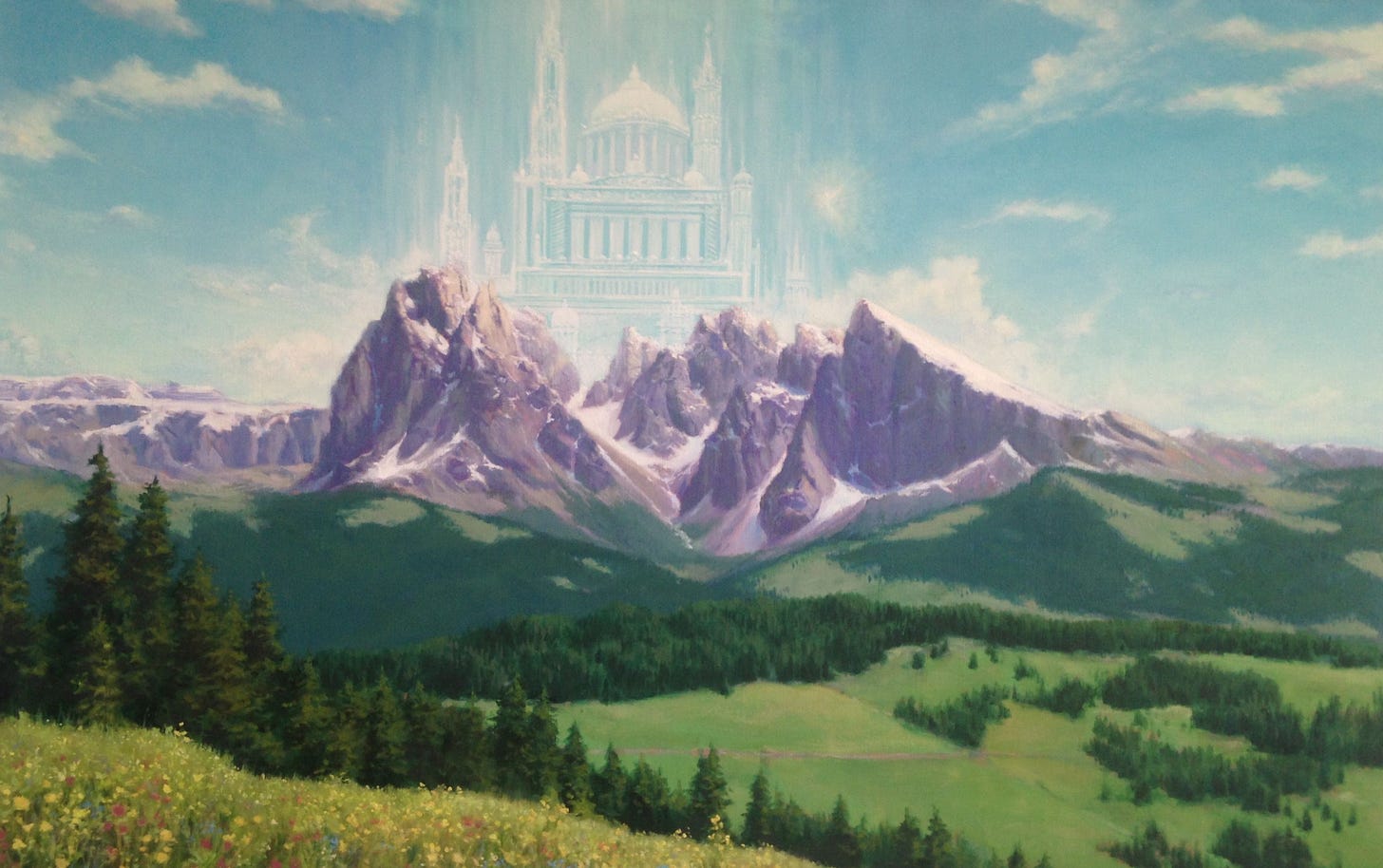
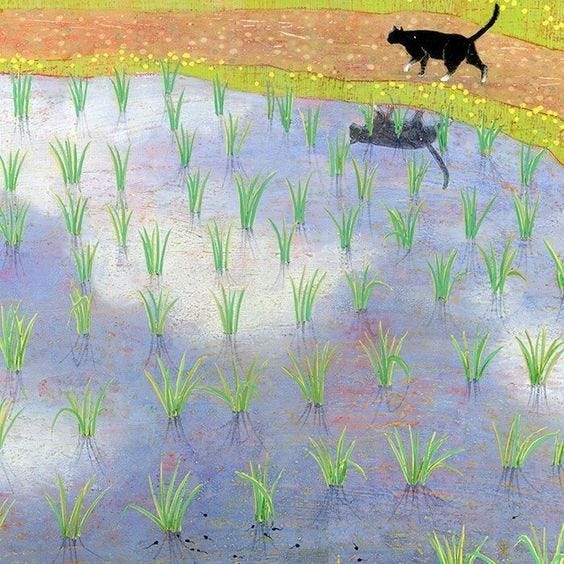
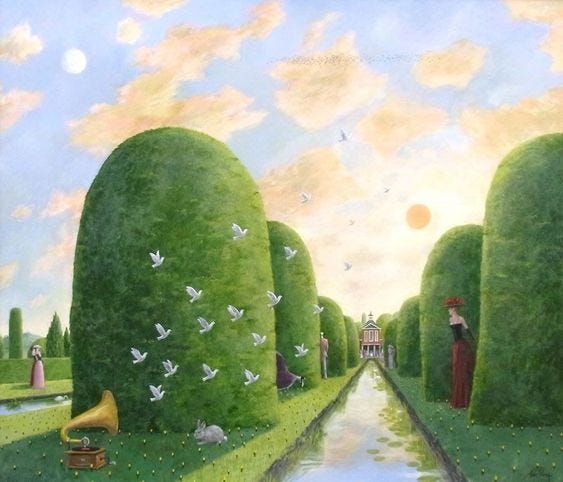
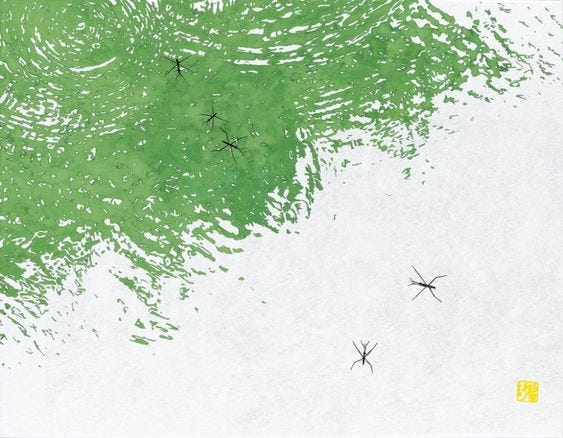
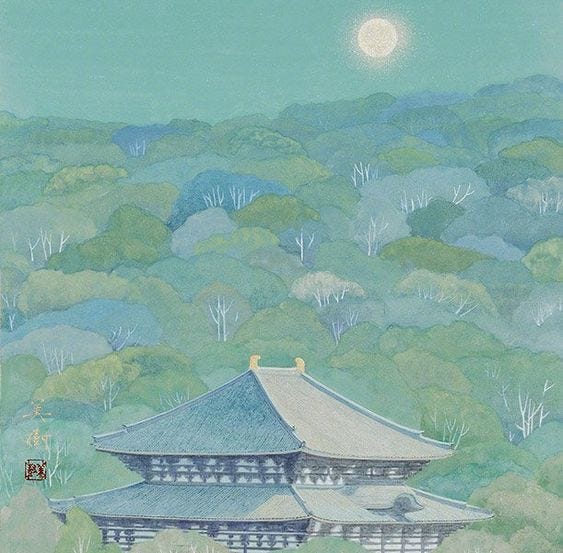
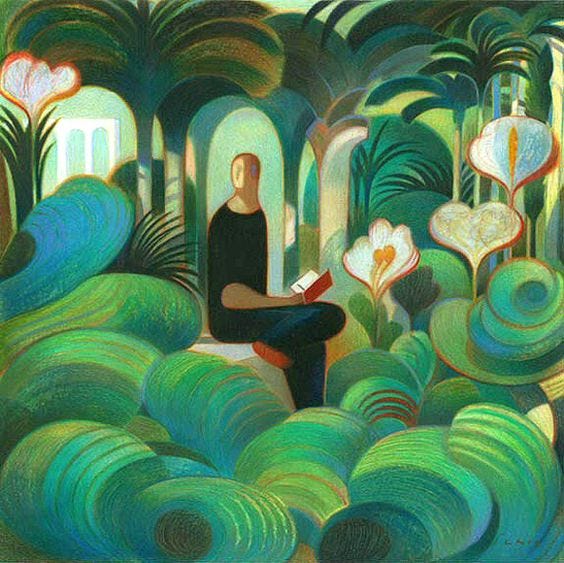




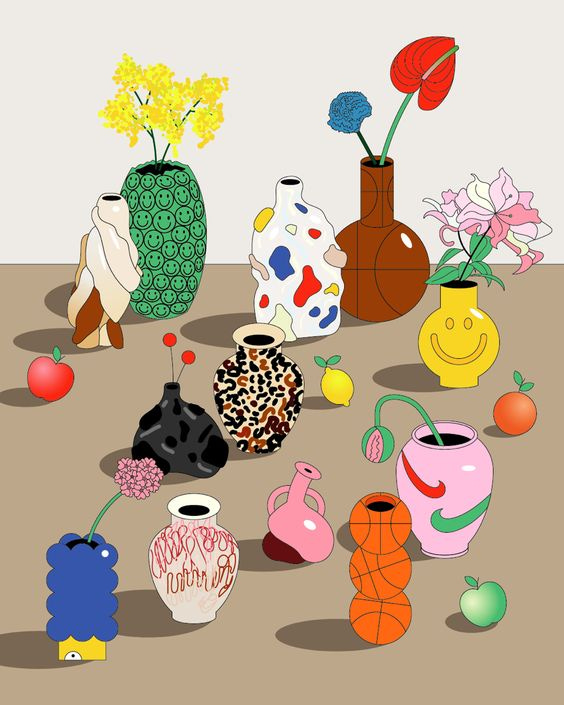

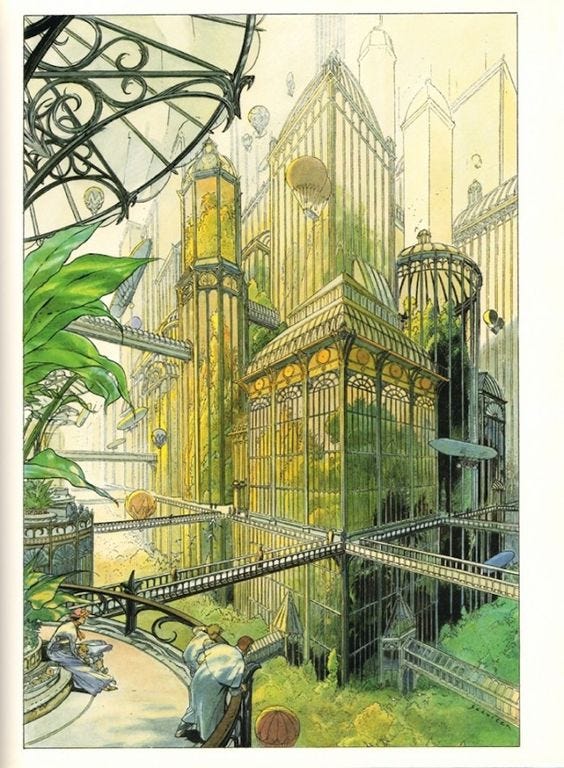
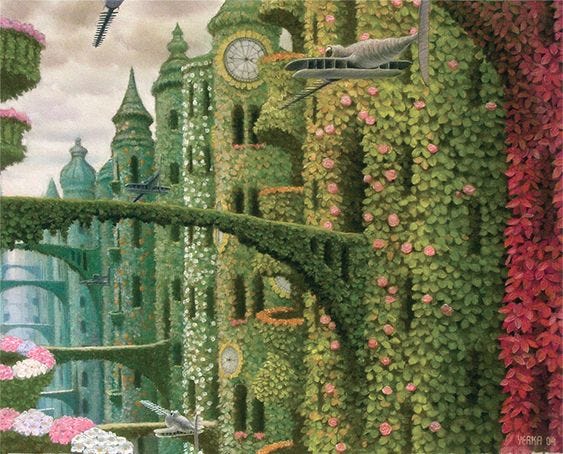
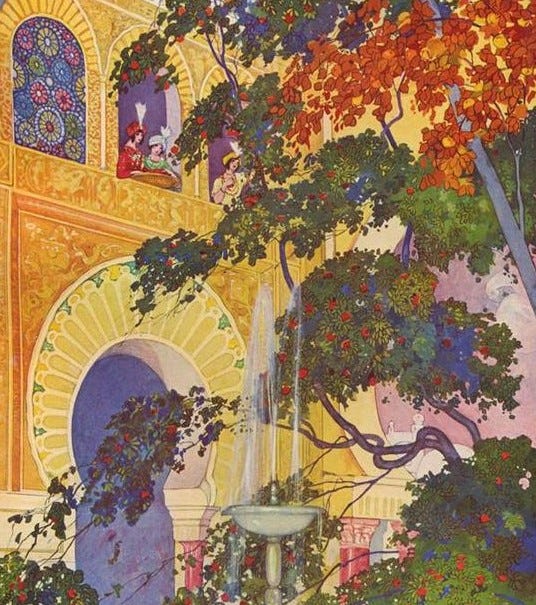
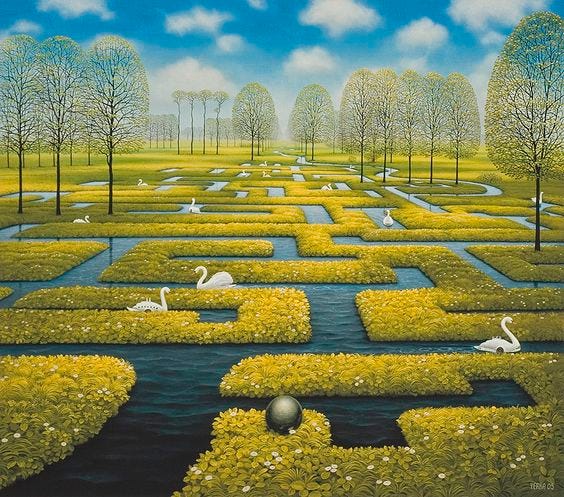


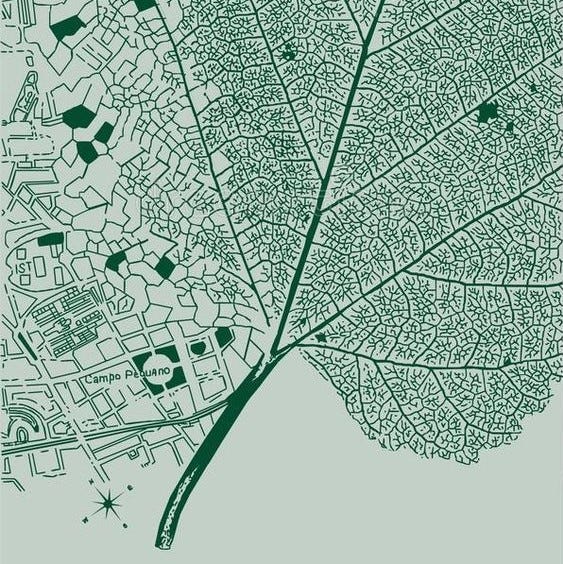
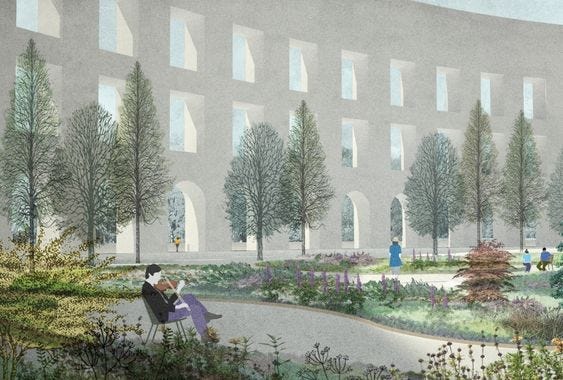
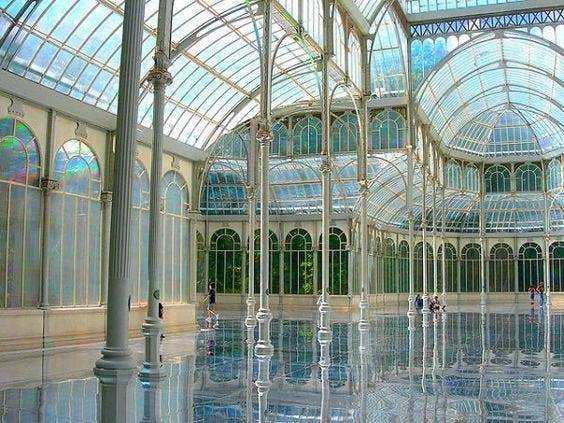
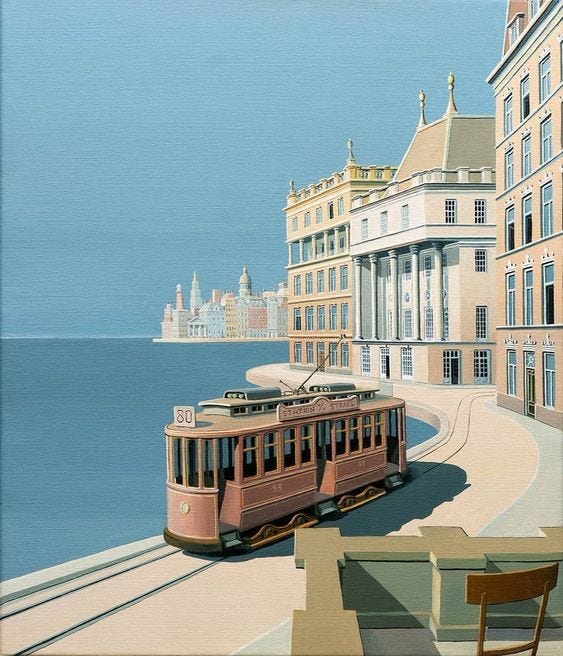
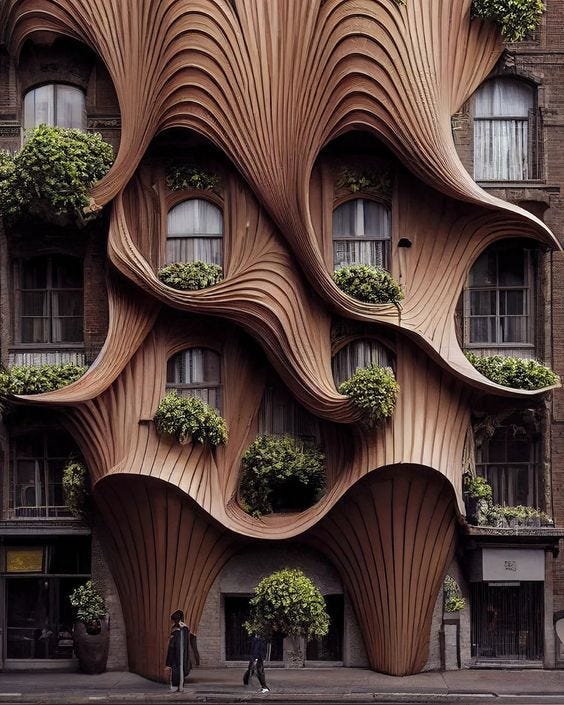
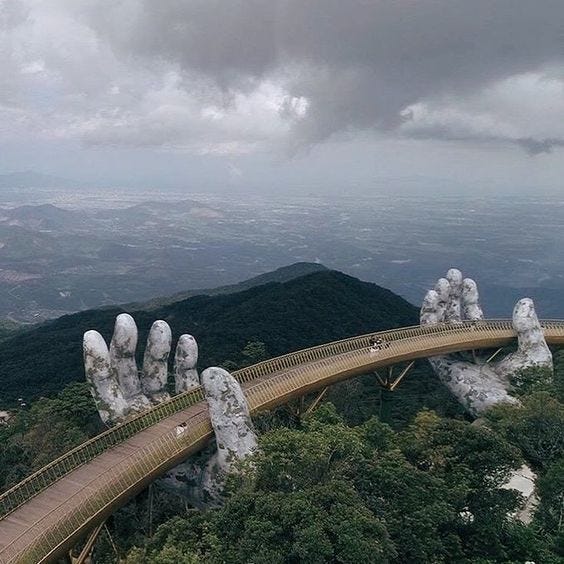
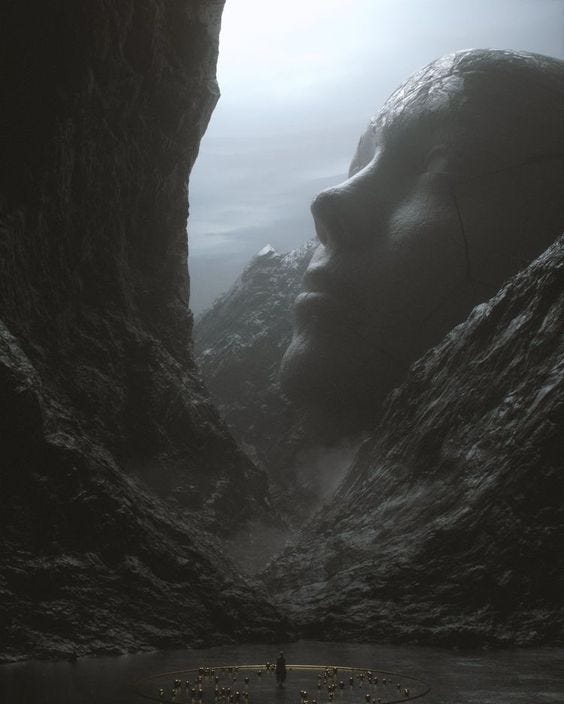







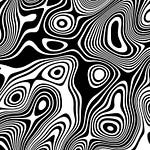
Share this post